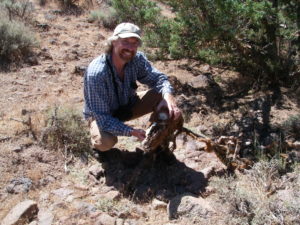Mountain Lions in an Era of Rapid Climate and Land-use Change
The mountain lion is a widely distributed carnivore, found in tropical and temperate latitudes throughout the western hemisphere. Its habitat requirements are highly generalized, being largely defined by the presence of ungulate prey and stalking cover. The species has demonstrated incredible tenacity in the face of anthropogenic pressures during the past century. Nevertheless, western landscapes are undergoing rapid changes stemming from human population growth, land-use, and climate desiccation, raising questions about the persistence of this iconic species. Dr. David Stoner explores the relationship between mountain lions and the ecological communities that support them in an era of climate change. Dr. Stoner argues that as an obligate carnivore, mountain lions should follow the changes in the distribution of their primary herbivore prey along gradients of habitat connectivity and land-use. However, drying of western ecosystems will make human subsidized landscapes increasingly important to both mountain lions and their prey, with commensurate increases in the potential for human-wildlife conflict.
 About Dr. David Stoner
About Dr. David Stoner
Dr. David Stoner is a Research Assistant Professor and Lecturer in the Quinney College of Natural Resources at Utah State University. He is a graduate of the University of California and Utah State University. Over the past 25 years he has worked with state wildlife agencies in California, Utah, and Nevada on scientific investigations of mountain lions and their major prey species. He is currently focused on interactions between mule deer, mountain lions, and wild horses in the southern Great Basin.


